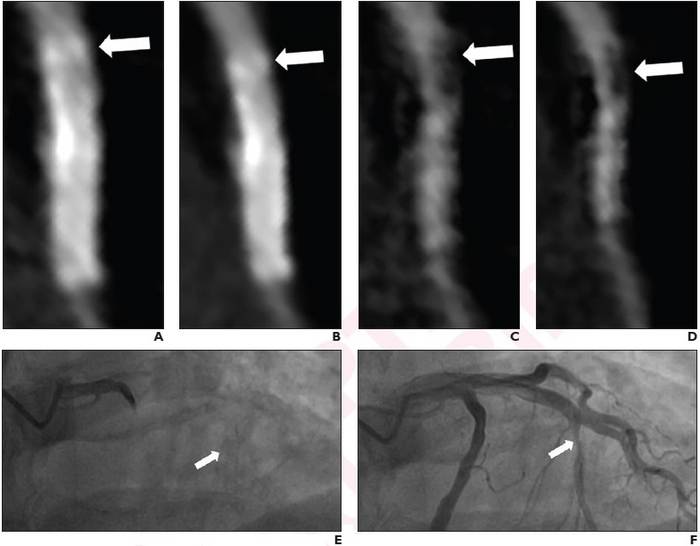Leesburg, VA, August 10, 2022—According to ARRS’ American Journal of Roentgenology (AJR), the combination of deep-learning reconstruction (DLR) and a subtraction technique yielded optimal diagnostic performance for the detection of in-stent restenosis by coronary CTA.

Credit: ARRS and AJR
Leesburg, VA, August 10, 2022—According to ARRS’ American Journal of Roentgenology (AJR), the combination of deep-learning reconstruction (DLR) and a subtraction technique yielded optimal diagnostic performance for the detection of in-stent restenosis by coronary CTA.
Noting that these findings could guide patient selection for invasive coronary stent evaluation, combining DLR with a two-breath-hold subtraction technique “may help overcome challenges related to stent-related blooming artifact,” added corresponding author Yi-Ning Wang from the State Key Laboratory of Complex Severe and Rare Diseases at China’s Peking Union Medical College Hospital.
Between March 2020 and August 2021, Wang and team studied 30 patients (22 men, 8 women; mean age, 63.6 years) with a total of 59 coronary stents who underwent coronary CTA using the two-breath-hold technique (i.e., noncontrast and contrast-enhanced acquisitions). Conventional and subtraction images were reconstructed for hybrid iterative reconstruction (HIR) and DLR, while maximum visible in-stent lumen diameter was measured. Two readers independently evaluated images for in-stent restenosis (≥50% stenosis).
Ultimately, coronary CTA using DLR and subtraction technique—with a combined (conventional and subtraction images) interpretation—yielded PPV, NPV, and accuracy for in-stent restenosis for reader 1 of 73.3%, 93.2%, and 88.1%, and for reader 2 of 75.0%, 84.3%, and 83.1%, respectively.
Acknowledging that the two-breath-hold subtraction technique requires an additional noncontrast acquisition (and thus a higher radiation dose), “DLR allows a reduction in radiation exposure, while improving image quality,” the authors of this AJR article pointed out.
North America’s first radiological society, the American Roentgen Ray Society (ARRS) remains dedicated to the advancement of medicine through the profession of medical imaging and its allied sciences. An international forum for progress in radiology since the discovery of the x-ray, ARRS maintains its mission of improving health through a community committed to advancing knowledge and skills with the world’s longest continuously published radiology journal—American Journal of Roentgenology—the ARRS Annual Meeting, InPractice magazine, topical symposia, myriad multimedia educational materials, as well as awarding scholarships via The Roentgen Fund®.
MEDIA CONTACT:
Logan K. Young, PIO
44211 Slatestone Court
Leesburg, VA 20176
703-858-4332
Journal
American Journal of Roentgenology
DOI
10.2214/AJR.22.27983
Method of Research
Imaging analysis
Subject of Research
People
Article Title
Coronary Artery Stent Evaluation by CTA: Impact of Deep Learning Reconstruction and Subtraction Technique
Article Publication Date
10-Aug-2022
COI Statement
All other authors have no conflict of interest to disclose.




